Department of Microbiology and Immunology Faculty

Research Summary
Ecology, biochemistry and genetics of methylotropic bacteria
Some bacteria that grow on methanol synthesize methanol dehydrogenase as 20% of the total cellular protein. This enzyme contains a large and small subunit. The structural genes for these subunits, for a chaperone and proteins required to attach the prosthetic group and incorporate calcium into the active site of the enzyme, are linked on the genome. Eight positively-acting regulatory proteins have been identified that are uniquely required for transcription of the genes in this regulon. Four are required for methanol dehyrogenase expression only and four others are required for expression of MDH as well as several other methanol inducible regulons. We are attempting to purify the regulatory proteins and identify their interactions and binding sites on DNA segments upstream of the MDH regulon.
We also study the ecology of very diverse bacteria that oxidize methane. We use phylogenetic signature probes and gene probes that encode unique enzymes in methane-oxidizing bacteria to detect these bacteria in complex communities of bacteria from natural habitats. We also use newly developed techniques to isolate new methane-oxidizing bacteria. These techniques include opposing gradients of gases and other chemicals that allow us to separate and grow different methanotrophs in agarose columns.
Publications
- Jahng D. , C.S. Kim, R.S. Hanson, and T.K. Wood. (1996) Optimization of trichloroethylene degredation using solumble methane monooxygenase of Methylosinus trichosporium OB3b expressed in recombinant bacteria. Biotechnology and Bioengineering 51:349-359.
- Hanson R.S. , and T.E. Hanson. (1996) Methanotrophic Bacteria. Microbiological Reviews 439-471.
- Xu, H., J. Janka, M. Viebahn, and R.S. Hanson. (1995) Nucleotide sequence of the mxcQ and mxcE genes required for methanol dehydrogenase synthese in Methylobacterium organophilum XX: A two-component regulatory system. Microbiology 141:2543-2251.
- Brusseau, G.A., E.S. Boulygina, and R.S. Hanson. (1994) Phylogenetic analysis and development of probes for differentiating methylotrophic bacteria. Appl. Environ. Microbiol. 60:626-636.


Bio
Expertise
Bacteriophage phi29 structure and assembly
Research Summary
Structure and Assembly of Bacteriophage ø29 Bacteriophage ø29 of Bacillus subtilis offers the opportunity for a complete understanding of the structure and assembly of a complex dsDNA bacterial virus in molecular terms. Current goals include uncovering the mechanisms of a) assembly of the viral precursor capsid (prohead) in vitro from purified proteins and a host chaperonin, b) assembly and function of the powerful motor that packages the dsDNA and the mechanochemical energy transduction, c) sequential protein and DNA conformational changes that regulate assembly, and d) tail penetration of the cell wall during infection. Atomic resolution structures of five of eight ø29 structural proteins have been produced, and a complete atomic resolution structure of the virus is within reach. A sequence of single-particle, asymmetric cryoEM-3D reconstructions of mature and empty virions have been produced in collaborations. A sub-nanometer reconstruction has revealed protein secondary structural elements in situ, rearrangement of connector alpha helices, remodeling of the shell protein where it contacts DNA, and a 60Å diameter DNA toroid in the junction between connector/lower collar that may form as the DNA responds to linear compression. The mechanochemical cycle of the packaging motor has been probed by the use of laser tweezers single molecule studies in collaboration. Phosphate or ADP release is likely the power stroke of the motor. Use of optical tweezers capable of 1 bp resolution has revealed a highly coordinated motor in which the gp16 ATPase subunits load with ATP during a “dwell”, followed by rapid firings of the subunits to package 10 bp of DNA in a “burst” which consists, surprisingly, of four 2.5-bp steps. Load bearing contacts with phosphates that regulate the chemical cycle take place during the dwell phase every 10-bp on the 5’-3’ strand in the direction of packaging. Strong phosphate contacts hold the DNA in place during the dwell phase, while less specific contacts drive translocation during the burst phase. The ø29 tail proteins gp13 and gp12* have enzymatic activities, forecasting an understanding of tail penetration of the cell wall in infection. The morphogenetic factor gp13, located at the distal tip of the tail knob, is a Zn2+-D,D-endopeptidase that cleaves the peptide cross-link of the B. subtilis cell wall. Its structure was solved to 1.8Å resolution by X-ray crystallography. An autocatalytic assembly mechanism of the gp12 tail appendages was demonstrated by X-ray crystallography. The gp12 C-terminal domain is an “auto-chaperone” that aids trimerization, and auto-cleavage of the domain is followed by a unique ATP-dependent release. Subsequently, three domains of the N-terminus function in appendage attachment, cell wall digestion, and host binding, respectively.
Publications
- Ding, F., C. Lu, W. Zhao, R. R. Kanagalaghatta, D. L. Anderson, P. J. Jardine, S. Grimes, and A. Ke. 2011. Structure and assembly of the essential RNA ring component of a viral DNA packaging motor. Proc. Natl. Acad. Sci. U.S.A.108:7357-7362.
- Aathavan, K., A. T. Politzer, A. Kaplan, J. R. Moffitt, Y. R. Chemla, S. Grimes, P. J. Jardine, D. L. Anderson, and C. Bustamante. 2009. Substrate Interactions and Promiscuity in a Viral DNA Packaging Motor. Nature 461:669-673.
- Xiang, Y., P. G. Leiman, L. Li, S. Grimes, D. L. Anderson, and M. G. Rossmann. 2009. Crystallographic insights into the autocatalytic assembly mechanism of a bacteriophage tail spike. Mol. Cell 34:375-386. PMC Journal - In Process.
- Cohen, D. N., Y. Y. Sham, G. D. Haugstad, Y. Xiang, M. G. Rossmann, D. L. Anderson, and D. L. Popham. 2009. Shared catalysis in virus entry and bacterial cell wall depolymerization. J. Mol. Biol. 387:607-618. PMC Journal – In Process.
- Moffitt, J. R., Y. R. Chemla, K. Aathavan, S. Grimes, P. J. Jardine, D. L Anderson, and C. Bustamante. 2009. Intersubunit coordination in a homomeric ring ATPase. Nature 457:446-450. PMC Journal - In Process.
- Zhao, W., M. C. Morais, D. L. Anderson, P. J. Jardine, and S. Grimes. 2008. Role of the CCA bulge of prohead RNA of bacteriophage ø29 in DNA packaging. J. Mol. Biol. 383:520-528. PMC Journal - In Process.
- Koti, J. S., M. C. Morais, R. Rajagopal, B. A. L. Owen, C. T. McMurray, and D. L. Anderson. 2008. DNA packaging motor assembly intermediate of bacteriophage ø29. J. Mol. Biol. 381:1114-1132. PMC Journal – In Process.
- Xiang, Y., M. C. Morais, D. C. Cohen, V. D. Bowman, D. L. Anderson, and M. G. Rossmann. 2008. Crystal and cryoEM structural studies of a cell wall degrading enzyme in the bacteriophage ø29 tail. Proc. Natl. Acad. Sci. U.S.A. 105: 9552-9557. PMCID:PMC2474476.
- Morais, M. C., J. S. Koti, V. D. Bowman, E. Reyes-Aldrete, D. L. Anderson, and M. G. Rossmann. 2008. Defining molecular and domain boundaries in the bacteriophage ø29 DNA packaging motor. Structure. 16:1267-1274. PMC Journal – In Process.
- Kitamura, A., P. J. Jardine, D. L. Anderson, S. Grimes, and H. Matsuo. 2008. Analysis of intermolecular base pair formation of prohead RNA of the phage ø29 DNA packaging motor using NMR spectroscopy. Nucleic Acids Res. 36:839-848. PMCID: PMC2241910
- Cohen, D. N., S. E. Erickson, Y. Xiang, M. G. Rossmann, and D. L. Anderson. 2008. Multifunctional roles of a bacteriophage phi 29 morphogenetic factor in assembly and infection. J. Mol. Biol. 378: 804-817. PMCID: PMC2443984.
- Tang, J., N. Olson, P. J. Jardine, S. Grimes, D. L. Anderson, and T. S. Baker. 2008. DNA poised for release in bacteriophage ø29. Structure 6:935-943. PMCID: PMC2556148.
- Comolli, L. R., A. J. Spakowitz, C. E. Siegerist, P. J. Jardine, S. Grimes, D. L. Anderson, C. Bustamante, and K. H. Downing. 2008. Three-dimensional architecture of the bacteriophage ø29 packaged genome and elucidation of its packaging process. Virology 371:267-277.
- Rickgauer, J. P., D. N. Fuller, S. Grimes, P. J. Jardine, D. L. Anderson, and D. E. Smith. 2008. Portal motor velocity and internal force resisting viral DNA packaging in bacteriophage ø29. Biophys J. 94:159-167. PMCID: PMC2134861.
- Fuller, D. N., D. M. Raymer, J. P. Rickgauer, R. M. Robertson, C. E. Catalano, D. L. Anderson, S. Grimes, and D. E. Smith. 2007. Measurements of single DNA molecule packaging dynamics in phage lambda reveal high forces, high motor processivity, and capsid transformations. J. Mol. Biol. 373:1113-1122.
- Fuller, D., J. P. Rickgauer, P. J. Jardine, S. Grimes, D. L. Anderson, and D. E. Smith. 2007. Ionic effects on viral DNA packaging and portal motor function in bacteriophage ø29. Proc. Natl. Acad. Sci. U. S. A. 104:11245-11250. PMCID: PMC2040884.
- Atz, R., S. Ma, J. Gao, D. L. Anderson, and S. Grimes. 2007. Alanine scanning and Fe-BABE probing of the bacteriophage ø29 prohead RNA-connector interaction. J. Mol. Biol. 369:239-248. PMCID: PMC1976407
- Hugel, T., J. Michaelis, C. L. Hetherington, P. J. Jardine, S. Grimes, J. M. Walter, W. Falk, D. L. Anderson, and C. Bustamante. 2007. Experimental test of connector rotation during DNA packaging into bacteriophage ø29 capsids. PLoS Biol. 5:e59. PMCID: PMC1800307.
- Xiang, Y., M. C. Morais, A. J. Battisti, S. Grimes, P. J. Jardine, D. L. Anderson, and M. G. Rossmann. 2006. Structural changes of bacteriophage ø29 upon DNA packaging and release. EMBO J. 25:5229-5239. PMCID: PMC1630414.
- Jardine, P. J. and D. Anderson. 2006. DNA packaging in double-stranded DNA bacteriophages. In The Bacteriophages, R. Calendar, ed., Oxford Press, Chapter 6, 49-65.
- Choi, K. H., M. C. Morais, D. L. Anderson, and M. G. Rossmann. 2006. Determinants of bacteriophage ø29 head morphology. Structure 14:1723-1727.
- Morais, M. C., K. H. Choi, J. S. Koti, P. R. Chipman, D. L. Anderson, and M. G. Rossmann. 2005. Conservation of the capsid structure in tailed dsDNA bacteriophages: the pseudoatomic structure of ø29. Mol. Cell 18:149-159.
- Chemla, Y. R., K. Aathavan, J. Michaelis, S. Grimes, P. J. Jardine, D. L. Anderson, and C. Bustamante. 2005. Mechanism of force generation of a viral DNA packaging motor. Cell 122: 683-692.
- Anderson, D. and S. Grimes. 2005. The ø29 DNA packaging motor: seeking the mechanism. In Viral Genome Packaging. C. Catalano, ed., Landes Bioscience, Chapter 7.
Contact
Address
Institute for Molecular Virology18-242 Moos Tower 515 Delaware St SE
Minneapolis, MN 55455


Research Summary
Bordetella pertussis, Bordetella bronchiseptica and Bordetella parapertussis are mammalian respiratory pathogens that are highly genetically-related Gram-negative members of the family Alcaligenaceae. B. pertussis, the agent of whooping cough (pertussis), is an obligate human pathogen. B. parapertussis causes respiratory infections in humans and sheep, and B. bronchiseptica infects a wide range of nonhuman mammals. These bacteria adhere to the cilia of the host respiratory tract, obtain nutrients, replicate and elaborate virulence factors that enable them to persist and become transmitted to new hosts.To determine how these organisms successfully live in the host, we must understand their biology. Nearly all organisms require nutritive iron and its assimilation is essential for invading pathogenic bacteria to establish infection in the iron-limiting environment of the host. Bordetella species obtain iron supplied by their native iron-chelating siderophore, alcaligin, as well as siderophores produced by other microbial species, and from host iron containing compounds including heme. These iron retrieval systems are expressed when the bacteria are starved for iron and expression is further activated by cognate transcriptional regulators that respond to the presence of the specific iron compound. Recent studies have determined that these bacteria can utilize host neuroendocrine hormones, such as norepinephrine, for iron retrieval. Our studies are aimed at understanding the processes governing the expression of different Bordetella iron acquisition systems in the host during the course of infection.
Publications
- Hanawa, T., H. Yonezawa, H. Kawakami, S. Kamiya and S.K. Armstrong. 2013. Role of Bordetella pertussis RseA in the cell envelope stress response and adenylate cyclase toxin release. Pathog. Dis. In press.
- Brickman, T.J. and S.K. Armstrong. 2012. Iron and pH-responsive FtrABCD ferrous iron utilization system of Bordetella species. Mol. Microbiol. 86:580-593.
- Armstrong, S.K., T.J. Brickman and R.J. Suhadolc. 2012. Involvement of multiple distinct Bordetella receptor proteins in the utilization of iron liberated from transferrin by host catecholamine stress hormones. Mol. Microbiol. 84:446-462.
- Brickman, T.J., C. A. Cummings, S-Y. Liew , D. A. Relman and S.K. Armstrong. 2011. Transcriptional profiling of the iron starvation response in Bordetella pertussis provides new insights into siderophore utilization and virulence gene expression. J. Bacteriol. 193:4798-4812.
- Brickman, T.J. and S.K. Armstrong. 2009. Temporal signaling and differential expression of Bordetella iron transport systems: the role of ferrimones and positive regulators. BioMetals. 22:33-41.
- Brickman, T.J., Hanawa T., Anderson M.T., Suhadolc, R.J. and S.K. Armstrong. 2008. Differential expression of Bordetella pertussis iron transport system genes during infection. Mol. Microbiol. 70:3-14.
- Anderson, M.T. and S.K. Armstrong. 2008. Norepinephrine mediates acquisition of transferrin-iron in Bordetella bronchiseptica. J. Bacteriol. 190:3940-3947.
Contact
Address
3-117 MRF689 23rd Ave SE
Minneapolis, MN 55455


Research Summary
Metabolic requirements for bacterial persistenceThe ability of Mycobacterium tuberculosis (Mtb) to persist in the presence of anti-mycobacterial drugs and immune effector functions is the greatest obstacle in our attempt to eradicate tuberculosis (TB). My laboratory is investigating the hypothesis that persistence is enabled by entrance into and maintenance of a physiological state that is metabolically distinct from that of actively replicating bacilli. The aim of this work is to define this state (or series of states) and characterize pathways that are essential for its establishment and maintenance. My laboratory uses a variety of classical and novel approaches in mycobacterial genetics, biochemistry, physiology, and metabolomics to characterize i) novel aspects of intermediary metabolism in Mtb, ii) metabolic requirements for phenotypic drug tolerance, and iii) drug targets and drug-like compounds effective against persistent bacilli. While these studies address basic science questions about unique aspects of Mtb, they will also provide important contributions to the collaborative and global effort to eradicate TB.
Selected Publications
Contact
Address
4-115 MRF689 23rd Ave SE
Minneapolis, MN 55455


Research Summary
Molecular mechanisms of human cytomegalovirus replication and pathogenesis My laboratory is focused on understanding the mechanisms of human cytomegalovirus (HCMV) replication and pathogenesis. The long term goal of my laboratory is to provide a molecular understanding of HCMV replication and pathogenesis that will lead to the development of novel approaches or therapeutics to help fight HCMV infection. HCMV is a ubiquitous herpesvirus that infects greater than 70% of the world's population. Although HCMV infection is usually sub-clinical in healthy individuals, it is a major health problem for neonates, infants, and immunocompromised individuals. HCMV is the most common cause of viral induced birth defects in the US, with over 40,000 infants infected at birth each year. HCMV pathology in adults is most frequently encountered in immunocompromised individuals such as transplant recipients and AIDS patients. HCMV is the single most important infectious agent affecting organ transplant recipients; with at least two-thirds of these patients developing an HCMV-infection 1-4 months after transplantation. The increasing use of therapeutic immunosuppression, organ transplantation and the incidence of AIDS have focused our attention upon the HCMV life cycle, with a view towards achieving a thorough understanding of virus/cell interactions and viral replication processes, and thereby identifying approaches to attenuate primary and/or reactivated HCMV infection. Our research focuses on three areas of HCMV biology that include: 1) the identification and functional characterization of viral tegument proteins, 2) identifying the mechanisms by which HCMV subverts the host innate immune system, and 3) using genomic approaches to study HCMV gene regulation.One major interest of our laboratory is to identify the mechanisms by which HCMV subverts the host's innate antiviral defenses. Results from our laboratory indicate that HCMV rapidly and effectively blocks the induction of IFN-b and chemokines following infection of the host cell. The inhibition of IFN-b presumably inhibits the cells ability to induce interferon responsive genes and mount an effective antiviral response, thereby providing HCMV a mechanism to evade the host immune system and persist within the host. Using numerous biochemical and genetic approaches we have determined that the HCMV immediate early-2 gene product IE86 effectively blocks the induction of IFN-b and chemokines following HCMV infection. We are currently working to identify the molecular mechanism by which IE86 blocks the induction of these proteins.A second interest in the laboratory involves determining what role HCMV tegument proteins play during HCMV replication. Tegument proteins are packaged within the virus particle and delivered to the host cell immediately upon infection. These tegument proteins are key regulators of viral and cellular gene expression, modulators of the host anti-viral response, and are critical for "kick starting" the viral infection. Our laboratory has taken biochemical and genetic approaches to decipher the functions of individual HCMV tegument proteins and examine what role they play in viral replication and pathogenesis
Education
Contact
Address
1-111 Microbiology Research Facility689 23rd Ave SE
Minneapolis, MN 55455-1507
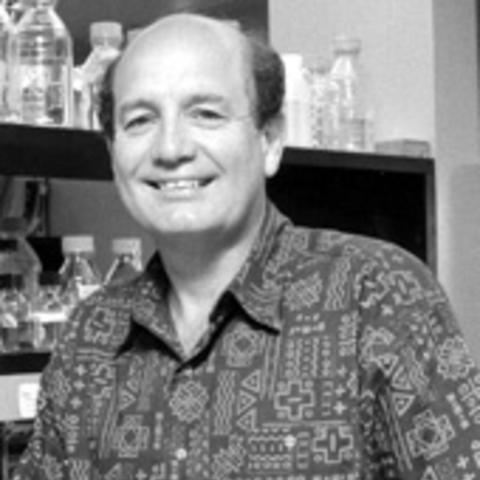
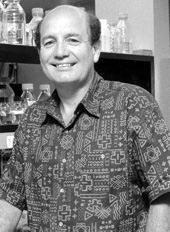
Research Summary
The molecular basis for streptococci disease
Streptococci are masters of immune avoidance. S. pyogenes, the most common cause of sore throat, are also responsible for serious diseases such as rheumatic fever, heart disease, and flesh eating wound infections. My research investigates the molecular and cellular processes that lead to these infections. Current experiments aim to define the impact of surface proteins, C5a peptidase and M protein, on persistence of S. pyogenes in the host. These multifunctional proteins interact with extracellular matrix proteins and cellular receptors to target streptococci to immune tissues. Experiments attempt to define host cell signaling pathways that lead to intracellular invasion and whether infection of secondary lymphoid tissue alters the immune response to streptococci. Studies of the cellular immune response to infection are another focus, which could help understand why children fail to develop a protective immune response following infection. A collaboration with a major pharmaceutical company will soon test a C5a peptidase vaccine in humans for prevention Strep throat. Molecular genetic, immunochemical and sophisticated imaging methods are used in these studies
Publications
- Cleary, P. P. 2006. Streptococcus moves inward. Nat Med 12:384-6.
- Wang, B., S. Li, P. J. Southern, and P. P. Cleary. 2006. Streptococcal modulation of cellular invasion via TGF-beta1 signaling. Proc Natl Acad Sci U S A 103:2380-5.
- Brown, C. K., Z. Y. Gu, Y. V. Matsuka, S. S. Purushothaman, L. A. Winter, P. P. Cleary, S. B.Olmsted, D. H. Ohlendorf, and C. A. Earhart. 2005. Structure of the streptococcal cell wall C5a peptidase. Proc Natl Acad Sci U S A 102:18391-6.
- Park, H. S. and P. P. Cleary. 2005. Active and passive intranasal immunizations with streptococcal surface protein C5a peptidase prevent infection of murine nasal mucosa-associated lymphoid tissue, a functional homologue of human tonsils. Infect Immun 73:7878-86.
- Park, H. S., M. Costalonga, R. L. Reinhardt, P. E. Dombek, M. K. Jenkins, and P. P. Cleary. 2004. Primary induction of CD4 T cell responses in nasal associated lymphoid tissue during group A streptococcal infection. Eur J Immunol 34:2843-53.
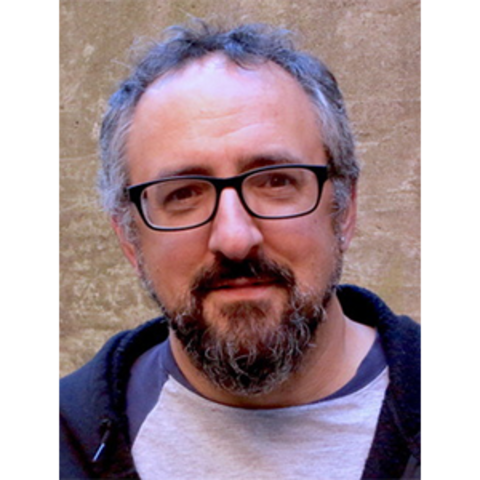
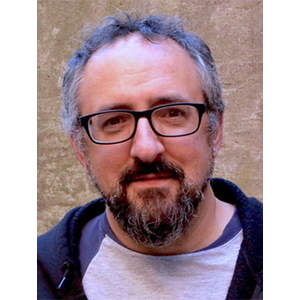
Research Summary
My primary research interests lie in understanding how yeast adapt to environmental changes. My laboratory has focused on interrogating how the opportunistic pathogen Candida albicans senses and responds to changes to extracellular pH and how these changes affect virulence. We are currently focused on two distinct questions: 1, how is phenotypic diversity acquired in C. albicans in the absence of a sexual cycle and how does this relate to environmental adaptation; 2, what yeast colonize non-human animals, primarily mammals, and what roles are the playing in these hosts/environments.
To answer these questions, we have developed both forward and reverse genetic techniques to study C. albicans. We use an ex vivo models to study virulence, including mouse models, human cell culture models, ex vivo human mucosal tissue, and Galleria melonella to study virulence. We are also doing a variety of basic microbiology coupled with genomic and bioinformatic approaches to study phenotypic diversity and the novel yeast identified in non-human animals.
Research Interests:
Candida albicans environmental sensing and adaptation; yeast evolution and ecology
Selected Presentations
Contact
Address
3-109 MRF689 23rd Ave SE
Minneapolis, MN 55455


Contact
Address
3-280 WMBB2101 6th St SE
Minneapolis, MN 55455


Research Summary
My laboratory studies the regulation of expression of genetic transfer functions and the regulation of virulence in gram positive bacteria. We are especially interested in regulatory mechanisms involving cell-cell signaling by peptide mating pheromones. We also study several novel intracellular regulatory RNA molecules that control expression of genes involved in conjugative plasmid transfer. Additional projects in the lab are focused on functional genomics of enterococci, with special emphasis on biofilm formation, antibiotic resistance and virulence.Since the MICaB program began, I have trained 10 Ph students and 10 postdoctoral fellows.
Publications
- Barnes, Aaron MT, Ballering, Katie S., Leibman, Rachel S., Wells, Carol L., Dunny, Gary M. 2012. Enterococcus faecalis Produces Abundant Extracellular Structures Containing DNA in the Absence of Cell Lysis during Early Biofilm Formation. mBio 3(4):e00193-12. doi:10.1128/mBio.00193-12.
- Chatterjee, A., Cook, LCC, Shu, CC, Chen, Y, Manias DA, Ramkrishna, D., Dunny, GM, Hu, W-S .2013. Antagonistic self-sensing and mate-sensing signaling controls antibiotic-resistance transfer. PNAS, 110(17), 7086-7090.
- Frank KL, Guiton PS, Barnes AM, Manias DA, Chuang-Smith ON, Kohler PL, Spaulding AR, Hultgren SJ, Schlievert PM, Dunny GM. 2013. AhrC and Eep are biofilm infection-associated virulence factors in Enterococcus faecalis. Infect Immun. 2013 May;81(5):1696-708.
- Johnson CM, Haemig HH, Chatterjee A, Wei-Shou H, Weaver KE, Dunny GM. 2011. RNA-mediated reciprocal regulation between two bacterial operons is RNase III dependent. MBio.2(5). pii: e00189-11.
- Cook L, Chatterjee A, Barnes A, Yarwood J, Hu WS, Dunny G. 2011. Biofilm growth alters regulation of conjugation by a bacterial pheromone. Mol Microbiol. 2011 Sep;81(6):1499-510.
Contact
Address
4-117 MRF689 23rd Ave SE
Minneapolis, MN 55455


Research Summary
Tumor viruses, oncogenesis, gene transfer
My research group examined the mechanism(s) by which two groups of tumor viruses, retroviruses and papillomaviruses, replicate and transform cells. To this end, we used molecular biological approaches to increase our understanding of the structure and function of tumor virus genes and their specific products. My lab's studies led to the identification, in most vertebrate species, of novel endogenous retroviruses as well as genetic sequences present in normal cells that may represent evolutionary precursors to certain tumor virus genes. Continuing studies will elucidate the nature of these genes and their possible function in growth and development, as well as in oncogenesis. My laboratory also investigates the role tumor viruses play in the induction of benign tumors and their progression to the malignant phenotype, particularly in people with genetic predisposition. Another study in the laboratory uses gene transfer and gene expression technologies to produce transgenic fish that exhibit properties of enhanced growth and disease resistance. All of the work in my laboratory uses state-of-the-art molecular biological technologies, including recombinant DNA, hybridoma, and gene sequencing/synthesis procedures.
Publications
- Faras, A. J. (1995) Oncology from bench to bedside. Minnesota Physician 9 (3):16-18.
- Ostrow, R., S. Coughlin, R. McGlennen. N. Johnson, M. Ratterree, J. Scheffler, N. Yaegashi, G. Galloway, and A. Faras. (1995) Serological and molecular evidence of rhesus papillomavirus type 1 infections in tissues from geographically distinct institutions. J. Gen. Virol. 76:293-299.
- Li, M., D. Bronson, T. Lemke, and A. Faras. (1995) Restricted expression of new HERV-K members in human teratocarcinoma cells. Virology 208:733-741.


Bio
Dr. Haase is Regents’ Professor and Head, Department of Microbiology and Immunology, University of Minnesota. Dr. Haase has devoted his research career from the 1970s to the present to understanding the slow infections caused by lentiviruses from visna virus to SIV and HIV. The Haase lab pioneered approaches to visualizing animal lentivirus and HIV infections in vivo to reveal HIV lymphoid tissue reservoirs; covert infections enabling persistence despite immune defenses and ART; mechanisms of CD4 T cell depletion that limit immune reconstitution; and transmission mechanisms that lay foundations for developing effective microbicides and vaccines. His lab is currently exploring the role of productive and latent infections in resting CD4 T cells during ART with the aim of better Rx to move us closer to a functional cure for HIV infection. Dr. Haase is a NIH NINDS Javits Awardee and two-time recipient of an NIH MERIT Award for his work on HIV, an elected member of the National Academy of Medicine and American Academy of Microbiology, and a Fellow of the AAAS. He has served on the NIH Councils of NIAID and OAR, as the first Chair of the AIDS Research Advisory Council, and as Chair of the US Delegation for the U.S. Japan Cooperative Medical Sciences Program.
Research Summary
Viral pathogenesis, HIV My laboratory investigates the pathogenesis, treatment and prevention of lentiviral immunodeficiency infections caused by HIV-1 and its simian relative, SIV, using such technologies as in situ hybridization, in situ tetramer staining and quantitative image analysis to visualize infection and the hosts' cellular immune response in tissues. Much of our recent work has focused on sexual mucosal transmission and the acute stage of SIV infection, the roles of "resting" and activated CD4 T cells in establishing infection, and the mechanisms of the massive depletion of CD4 T cells in the gut. Going forward, these studies provide a foundation for studies of the correlates of protection for attenuated vaccines, and the development of vaccines and microbicides to prevent transmission. My laboratory has also undertaken a comprehensive microarray analysis of HIV-1 and SIV infections with the objectives of understanding pathogenesis and identifying novel targets for treatment and prevention. Current efforts focus on broadening the microarray analysis to encompass the early through late stages of HIV-1 infection, and mapping genes identified in the analysis to gain insight into their function in HIV-1 infected lymphatic tissues, the principal sites of virus production, persistence and pathology.
Recent Publications:
- Kroon E, Chottanapund S, Buranapraditkun S, Sacdalan C, Colby DJ, Chomchey N, Prueksakaew P, Pinyakorn S, Trichavaroj R, Vasan S, Manasnayakorn S, Reilly C, Helgeson E, Anderson J, David C, Zulk J, de Souza M, Tovanabutra S, Schuetz A, Robb ML, Douek DC, Phanuphak N, Haase A, Ananworanich J, Schacker TW. Paradoxically Greater Persistence of HIV RNA-Positive Cells in Lymphoid Tissue When ART Is Initiated in the Earliest Stage of Infection. J Infect Dis. 2022 Jun 15;225(12):2167-2175. doi: 10.1093/infdis/jiac089. PMID: 35275599; PMCID: PMC9200151.
- Wietgrefe SW, Duan L, Anderson J, Marqués G, Sanders M, Cummins NW, Badley AD, Dobrowolski C, Karn J, Pagliuzza A, Chomont N, Sannier G, Dubé M, Kaufmann DE, Zuck P, Wu G, Howell BJ, Reilly C, Herschhorn A, Schacker TW, Haase AT. Detecting Sources of Immune Activation and Viral Rebound in HIV Infection. J Virol. 2022 Aug 10;96(15):e0088522. doi: 10.1128/jvi.00885-22. Epub 2022 Jul 20. PMID: 35856674; PMCID: PMC9364797.
- Luca Schifanella, Jodi Anderson, Garritt Wieking, Peter J Southern, Spinello Antinori, Massimo Galli, Mario Corbellino, Alessia Lai, Nichole Klatt, Timothy W Schacker, Ashley T Haase, The Defenders of the Alveolus Succumb in COVID-19 Pneumonia to SARS-CoV-2 and Necroptosis, Pyroptosis, and PANoptosis, The Journal of Infectious Diseases, 2023;, jiad056, https://doi.org/10.1093/infdis/jiad056
- Wu G, Zuck P, Goh SL, Milush JM, Vohra P, Wong JK, Somsouk M, Yukl SA, Shacklett BL, Chomont N, Haase AT, Hatano H, Schacker TW, Deeks SG, Hazuda DJ, Hunt PW, Howell BJ. Gag p24 Is a Marker of Human Immunodeficiency Virus Expression in Tissues and Correlates With Immune Response. J Infect Dis. 2021 Nov 16;224(9):1593-1598. doi: 10.1093/infdis/jiab121. PMID: 33693750; PMCID: PMC8599810.
Contact
Address
2-115 MRF689 23rd Ave SE
Minneapolis, MN 55455


Research Summary
Antigen-Antibody Interactions; Apoptosis
My laboratory contributed to the seminal study showing that cytochrome c (Cyt c) translocates from mitochondria to the cytoplasm during apoptosis and plays a key role in the activation of programmed cell death (Cell 86:147-157, 1996). One monoclonal antibody specific for the native protein was used to remove Cyt c, thus showing that this protein and not a contaminant was responsible for the pro-apoptotic activity and another monoclonal antibody specific for the carboxyl terminal dodecapeptide was used to show Cyt c translocation to the cytoplasm by Western blotting. Later we found that Cyt c is released from apoptotic cells as an intact protein (Cell Death Differ. 9:538-548, 2002). Consequently, Cyt c has been explored as a potential clinical biomarker for aberrant apoptosis in vivo.
By distinguishing monoclonal antibodies that recognize native versus denatured Cyt c we also identified an antibody recognizing an altered conformation of Cyt c that has biological relevance (Biochemistry 36: 3599-3609, 1999). The altered form arises when the sixth ligand to the heme moiety is lost, endowing the protein with peroxidase activity and the ability to translocate to the nucleus without activating apoptosis (PNAS 119: e2213432119, 2022). This monoclonal antibody is, thus, a useful tool to examine a potential role of Cyt c in the nucleus, possibly affecting gene expression.
While developing an immunoassay to detect Cyt c in serum we discovered that leucine-rich alpha-2-glycoprotein-1 (LRG1) binds Cyt c and inhibits its detection in an antibody-based assay (Apoptosis 11:1121-1129, 2006). LRG1 has been implicated as a biomarker for a variety of cancers and microbial infections. However, its function was unknown. We have shown that LRG1 binds Cyt c in a manner similar to that of the protein Apaf-1 that initiates the intrinsic pathway of apoptosis. In vitro serum LRG1 acts as a survival protein extending the half -life of lymphocytes (Apoptosis 15:139-152, 2010). Recently, we demonstrated that, in MCF-7 breast cancer cells, cytoplasmic LRG1 competes with Apaf-1 for binding Cyt c in situ and, thus, inhibits the onset of apoptosis. We developed an enzyme-linked immunosorbent assay for LRG1 that may be useful clinically (J. Immunol. Methods 336:22-29, 2008).
Our apoptosis-related research evolved from studies of antibody recognition employing Cyt c as the model antigen. We made a number of observations that give insight into the antibody response with implications for vaccine development. We uncovered an artifact in immunoassays that misled researchers into believing that peptides could be broadly used as vaccines (PNAS 84:9180-9184, 1987). Even when a peptide can bind antibodies elicited against a native protein antigen this does not necessarily indicate that the peptide can activate B cells producing those antibodies as a certain affinity threshold must be met (Mol. Immunol. 26:301-307, 1989). We also showed that approximately 10% of memory B cells can be activated in an environment of T cell help in the absence of the cognate B cell antigen (Eur. J. Immunol. 21:951-958). This may explain, at least in part, the longevity of B cell memory after antigen has been depleted in vivo. We found that affinity maturation in the antibody response to a protein antigen follows the paradigm established for responses to smaller chemical compounds. Thus, an affinity increase of several hundred fold can result from DNA mutations at only a few key nucleotide positions in antibody genes (J. Immunol. 157:5329-5338, 1996). Much more about this phenomenon is explained in a follow-up review (Recent Res. Dev. Immunol. 4:13-25, 2002).
A surprising observation was a higher frequency of B lymphocytes in mice specific for mouse Cyt c than for foreign Cyts c (Eur. J. Immunol. 25:784-791, 1995). The autoreactive B cells generally expressed the same antibody heavy and light chain genes but were quite variable in CDR3 of the heavy chain. We speculate that mouse Cyt c may serve as a ligand for B cell positive selection. Supporting this idea, the antibody response to the closely related pigeon Cyt c actually initiates as a response more specific for mouse Cyt c utilizing those same variable region genes and eventually becomes more specific for pigeon Cyt c (PNAS 92:12379-12383, 1995).
Publications
- Jemmerson, R. (2024) Cytochrome c keeps on giving--A conformational change detected in situ with an antibody probe adds to the intricacies of its cellular functions. 21st Century Pathology 4(1):157-162.
- Tomasina, F., Martinez, J., ..., Jemmerson, R., Piacenza, L., and Radi, R. (2022) De novo sequencing and construction of a unique antibody for the recognition of alternative conformations of cytochrome c in cells.Proc. Natl. Acad. Sci. U.S.A. 119: e2213432119
- Jemmerson, R. (2023) LRG1, a blood and intracellular glycoprotein, interacts with cytochrome c to promote cell survival and block inflammation. 21st Century Pathology 3: 147.
- Jemmerson, R. (2021) Paradoxical roles of leucine-rich alpha 2-glycoprotein-1 in cell death and survival modulated by transforming growth factor-beta1 and cytochrome c. Front. Cell Dev. Biol. doi: 10.3389/fcell.2021.744908
- Jemmerson, R., Staskus, K., Higgins, L., Conklin, K., and Kelekar, A. 2021. Intracellular leucine-rich alpha-2-glycoprotein-1 competes with Apaf-1 for binding cytochrome c in protecting MCF-7 breast cancer cells from apoptosis. Apoptosis 26:71-82.
- Hannibal, L., Tomasina, F., Capdevila, D.A., Demicheli, V., Tortora, V., Alvarez-Paggi, D., Jemmerson, R., Murgida, D.H., and Radi, R. 2016. Alternative conformations of cytochrome c: Structure, function, and detection. Biochemistry 55:407-428.
- Lowman, X.H., McDonnell, M.A., Kosloske, A., Odumade, O.A., Jenness, C.B.,Jemmerson, R., and Kelekar, A. 2010. The proapoptotic Function of Noxa in human leukemia cells is regulated by the kinase Cdk5 and by glucose.Molecular Cell. 40:823-833.
- Codina, R., Vanasse, A. Kelekar, A., Vezys, V., andJemmerson, R.2010. Cytochromec-induced lymphotyte death from the outside in: Inhibition by serum leucine-rich alpha-2-glycoprotein-1. Apoptosis 15: 139-152.
- Cummings, C., Walder, J., Treeful, A., andJemmerson, R.2006. Serum leucine-rich alpha-2-glycoprotein-1 binds cytochromecand inhibits antibody detection of this apoptotic marker in enzyme-linked immunosorbent assay.Apoptosis 11:1121-1129.
- Jemmerson, R., Dubinsky, J. M., and Brustovetsky, N. 2005. Cytochrome c release from CNS mitochondria and potential for clinical intervention in apoptosis-mediated CNS diseases. Antioxid. Redox Signal. 7:1158-1172.
- Brustovetsky, N., Dubinsky, J. M., Antonsson, B., andJemmerson, R.2003. Two pathways for tBID-induced cytochromecrelease from rat brain mitochondria: BAK- versus BAX-dependence. J. Neurochem. 84:196-207.
- Jemmerson, R., LaPlante, B., and Treeful, A. 2002. Release of intact, monomeric cytochromec from apoptotic and necrotic cells.Cell Death and Differentiation 9:538-548.
- Jemmerson, R.2002.The molecular basis for affinity maturation in the antibody response to a protein antigen, cytochromec.Recent. Res. Devel. Immunology 4:13-25.
- Liu, X., Kim, C.N.,Jemmerson, R., Wang, X. 1996. Induction of apoptotic program in cell-free extracts: Requirement for dATP and Cytochromec.Cell 86:147-157.
- Mueller, C.M.,Jemmerson, R.1996. Maturation of the antibody response to the major epitope on the self antigen mouse cytochromec.J. Immunol 157:5329-5338.
- Minnerath, J.M., Mueller, C.M., Buron, S., and Jemmerson, R. 1995. B lymphocyte recognition of cytochrome c: Higher frequency of cells specific for self vs. foreign antigen early in the response and V gene usage in response to self antigen. Eur. J. Immunol. 25:784-791.
- Minerath, J.M., Wakem, L.P., Comfort, L.L., Sherman, F., and Jemmerson, R. (1995) The BALB/c mouse B cell response to pigeon cytochrome c initiates as a heteroclitic response specific for the self antigen mouse cytochrome c. Proc. Natl. Acad. Sci. U.S.A. 92:12379-12383.
- Jemmerson R. and Blankenfeld, R. 1989. Affinity consideration in the design of synthetic vaccines intended to elicit antibodies. Mol. Immunol. 26:301-307.
- Johnson, J.G. and Jemmerson, R. 1991. Relative frequencies of secondary B cells activated by cognate versus other mechanisms. Eur. J. Immunol. 21:951-958.
- Jemmerson, R.1987. Antigenicity and native structure of globular proteins: Low frequency of peptide reactive antibodies.Proc. Natl. Acad. Sci. USA. 84:9180-9184.
- Jemmerson, R.and Paterson, Y. 1986. Mapping epitopes on protein antigens by the proteolysis of antigen-antibody complexes.Science 232:1001-1004.

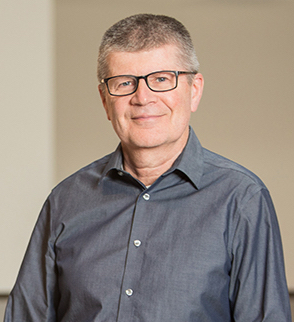
Bio
Marc Jenkins has had an illustrious career in immunology, marked by significant contributions to our understanding of T-cell biology. A native of Minnesota, Marc embarked on his academic journey by earning a Bachelor of Science degree in Microbiology from the University of Minnesota (UMN) in 1980. Following his undergraduate degree, Marc did doctoral research at Northwestern University, where he worked with Stephen Miller on delayed-type hypersensitivity.
Marc's postdoctoral training under Ronald Schwartz at the National Institutes of Health (NIH) was transformative for the field of immunology. During this period, he demonstrated the critical importance of a costimulatory signal for T cells to achieve full activation and avoid a state of anergy, a term used to describe T-cells rendered unresponsive to antigen stimulation. This discovery fundamentally reshaped the prevailing understanding of T-cell activation mechanisms, paving the way for further investigation into the molecular mechanisms governing T-cell activation and immune tolerance.
Since joining the faculty of the University of Minnesota's Microbiology Department in 1988, Marc's research has been marked by significant contributions to the field of immunology, particularly in the realm of CD4+ T cell biology. His research endeavors have been instrumental in unraveling the complexities of immune responses and shedding light on critical mechanisms underlying T cell activation and memory formation. His work has been instrumental in identifying key receptors like CD28, which play crucial roles in modulating T cell activation and function, elucidating the mechanisms underlying T cell responses to antigens in the body. His group at the University of Minnesota showed that antigen-specific CD4+ T cells first become activated in the central part of lymph nodes, then migrate to B cell-rich follicles and non-lymphoid organs, and documented the cellular changes that produce immune memory.
Currently, Jenkins' research focuses on unraveling the mechanisms underlying CD4+ T cell activation, memory cell formation, and immune protection. By leveraging insights from basic immunology discoveries, he aims to develop strategies for improving vaccine efficacy and preventing undesirable immune responses, such as transplant rejection and autoimmunity. Through his work, Jenkins continues to advance our understanding of the immune system, with the ultimate goal of translating these insights into clinical applications that benefit human health.
Throughout his career, Jenkins has been honored with prestigious awards recognizing his contributions to immunology, including the Pew Scholar Award, the American Association of Immunologists (AAI) Meritorious Career Award, the AAI Excellence in Mentoring Award, and the AAI Lifetime Achievement Award. He is a past President of the AAI and a member of the inaugural class of AAI Distinguished Fellows.
In 2020, Jenkins achieved another milestone by being elected to the National Academy of Sciences, a testament to the significance and impact of his research. Notably, he became the first faculty member from the UMN Medical School to receive this honor in 50 years, underscoring his exceptional standing in the scientific community.
Beyond his scientific endeavors, Jenkins enjoys various hobbies such as bicycling, fishing, supporting Minnesota sports teams, and spending time with his grandchildren, showcasing his well-rounded personality and interests outside of the laboratory.
Research Summary
The Jenkins lab is working on research that is focused on CD4+ T and B cell activation in vivo by directly tracking antigen-specific cells. The goal of this research is a basic understanding of lymphocyte activation that can be used to improve vaccines and prevent autoimmunity. View the full list of publications here.
Teaching Summary
University of Minnesota
- Course/Lecture List
1990 - present Course Director and Lecturer, MICA 8003 Immunity and Immunopathology - Program Design
1994-1995 Organizing Committee, Microbiology, Immunology and Molecular Pathobiology Ph.D. program (now known as Microbiology, Immunology and Cancer Biology)
American Association of Immunologists (AAI) Course/Lecture
2007-2014 Lecturer, AAI Advanced Course in Immunology
1998-2003 Lecturer, AAI Advanced Course in Immunology
2004-2009 Lecturer, AAI Basic Course in Immunology
Woods Hole Laboratory of Oceanography
2010-2014 Lecturer, Biology of Parasitism Course
Education
Honors and Recognition
Selected Publications
Contact
Address
3-188 MBB2101 6th Street SE
Minneapolis, MN 55414


Research Summary
Molecular pathogenesis; Lyme disease and human granulocytic ehrlichiosis
I studied Borrelia burgdorferi, the etiologic agent of Lyme disease and the agent of human granulocytic ehrlichiosis. Most recent projects in the lab included the study of the ecology of Lyme disease, human granulocytic ehrlichiosis, in Minnesota.
Publications
- Ravyn, M.D., J.L. Goodman, C.B. Kodner, D.K. Westad, L.A. Coleman, S.M. Engstron, C.N. Nelson, and R.C. Johnson. (1998) Immunodiagnosis of human granulocytic ehrlichiosis using culture derived human isolates. J. Clin. Microbiol. 36:1480-1488
- Ravyn, M.D., L. Lamb, R. Jemmerson, J.L. Goodman, and R.C. Johnson. (1999) Characterization of monoclonal antibodies to an immunodominant protein of the etiologic agent of human granulocytic ehrlichiosis. Amer. J. Trop. Med. Hyg. 61:171-176


Research Summary
Immunity to influenza virus infectionsInfluenza A virus (IAV) represents a major global health burden. Despite yearly vaccinations the virus is able to escape seasonal immunity requiring yearly vaccination and the threat of novel pandemics loom. Therefore continued understanding of the host-pathogen interactions and protective immune responses are critical for broadly protective vaccine development. Our overall research goal is to address fundamental questions in virology and viral immunology that have been difficult to dissect using conventional approaches. We utilized host-derived microRNAs, small non-coding RNA capable of mediating silencing of mRNA, to restrict the natural tropism of IAV. This allows for previously unavailable insights into immune responses to the virus. Additionally, we generate novel reporter viruses to further define the relationship between cellular tropism and immunity as well as to determine infected cell fate. A more comprehensive understanding of virus infection requirements that dictate immunity will be critical for the design of next generation vaccines and therapeutics
Contact
Address
1-117 MRF689 23rd Ave SE
Minneapoli, MN 55455


Research Summary
T cell migration, differentiation, and memory development in response to infectionsMy laboratory studies CD8 and CD4 T cell responses to a variety of viral and bacterial infections to help understand the development of immunological protection from re-infection. We observe and manipulate pathogen specific T cell responses over time by using MHC tetramers, adoptive transfer of transgenic T cells, fluorescence flow cytometry and sorting, and gene microarry analysis. Upon activation in lymphoid tissue, rare pathogen-specific naïve T cells proliferate, acquire effector functions, disseminate throughout the organism, and contribute to the eradication of pathogens. In situations where antigen is successfully eliminated, most effector T cells die by apoptosis. However, a fraction of effector T cells escape death and differentiate into long-lived memory T cells that contribute to protective immunity. We are currently dedicated to elucidating the developmental cues that govern T cell migration to different anatomical locations, commitment to the memory lineage, and the contribution of memory T cell differentiation state and location to protection from re-infection. Memory T cells that reside at common portals of pathogen entry or infection, especially the intestinal mucosa, are of particular interest. By understanding these issues, we hope to contribute to the development of better vaccination strategies, and are currently focused on informing development of a protective HIV vaccine.
Contact
Address
2-182 MBB2101 6th Street SE
Minneapolis, MN 55414


Research Summary
Research in my laboratory is focused on the virulence factors and pathogenic mechanisms of the gram-negative bacterium Burkholderia cepacia. B. cepacia has recently emerged as an important opportunistic pathogen of the lower respiratory tract, affecting immunocompromised individuals and particularly cystic fibrosis (CF) patients.
Projects in My Laboratory:
Type III Secretion Pathogenesis in a growing number of gram-negative bacteria is dependent on the secretion of virulence proteins via a conserved secretory system, termed type III. We have identified and characterized a genetic locus encoding multiple type III secretion genes in B. cepacia. Using allelic exchange mutagenesis, we generated defined null mutations in central components of the type III secretion system, and demonstrated that a type III mutant is severely attenuated in virulence in a murine model of infection. We are currently pursuing proteomic and genomic-based approaches to identify the secreted substrates of the B. cepacia type III translocon, as well as further characterize the role of type III secretion in modulating the host response to B. cepacia infection. Cable Pilus Biogenesis Cable pili are unique peritrichous adherence organelles expressed by certain strains of B. cepacia. Cable pili have been shown to mediate binding to both cellular and acellular receptors, and likely promote B. cepacia colonization of the respiratory tract of compromised hosts. We have undertaken a genetic analysis of cable pili and have identified and characterized a locus ( cbl) encoding structural, accessory, and regulatory components of the cable pilus biosynthetic pathway. We have also initiated studies to define the regulatory control of cable pilus gene expression, and have evidence that control is manifested at both the transcriptional and posttranscriptional levels. We have recently identified within the cbl locus three additional genes, designated cblS, cblT and cblR, predicted to encode new members of the superfamily of environmentally responsive two-component signal transduction systems. We are currently utilizing a combined genetic and biochemical approach to characterize the function of these genes and to define the signal transduction events controlling cable pilus gene expressionElectron micrographs of macrophages infected with Burkholderia cepaciaElectron micrographs of wild-type Burkholderia cepacia expressing cable pili (A-D) and a cblA mutant strain (E,F) blocked in cable pilus expression
Contact
Address
3-113 MRF689 23rd Ave SE
Minneapolis, MN 55455


Research Summary
Central Nervous System Penetration by Cryptococcus neoformans Fungal infections affect billions of people every year, often causing lethal disease in immunocompromised individuals. Of particular concern are invasive fungal infections, estimated to kill one and a half million people annually. Cryptococcus neoformans infections cause almost half of all deaths due to fungal infection. Even with access to the best available antifungals, Cn mortality rates of 20-40% remain unacceptably high. Although natural immunity to fungal infection is quite efficient in immune replete humans, disease in immune deficient individuals is often a complex interaction between failure to control fungal replication and an inappropriate immune response. My research program focuses on understanding how Cryptococcus causes disease, with the goal of developing better treatment strategies that improve patient survival. Our research primarily focuses on studies to understand the novel "titan cell" morphology during Cryptococcus infection. Upon inhalation, Cryptococcus establishes an initial pulmonary infection that eventually disseminates to the central nervous system (CNS) to cause meningitis. In response to the host pulmonary environment, a subset of Cryptococcus cells become titan cells that are 5-10x larger than typical-sized cells. These titan cells are critical for virulence, impact dissemination to the CNS, and their production during the infection dramatically alters the host response by reducing phagocytosis and stimulating a detrimental Th2-mediated response. Our current research is aimed at understanding the molecular mechanisms and host-pathogen interactions underlying the activity of titan cells during infection.
Contact
Address
4-101 MRF689 23rd Ave SE
Minneapolis, MN 55455


Research Summary
Herpes simplex virus gene expression The infection of mammalian cells with herpes simplex virus type 1 (HSV-1) results in dramatic alterations to the host cell nucleus, so that viral genes are expressed at high levels, while cellular genes are nearly completely suppressed. This genetic subversion is accomplished by a small set of HSV-1 regulatory proteins, which are amenable to biochemical and genetic analysis. Currently, our laboratory is studying two of these proteins, ICP27 and ICP22. ICP27 is conserved in all known herpesviruses and is absolutely essential for HSV-1 late gene expression. Although its mechanism of action is unknown, a variety of evidence suggests that it is an unusual type of gene regulator which affects pre-mRNA processing and transport. Consistent with its suspected post-transcriptional role, we have shown that ICP27 is an RNA-binding protein that continuously shuttles between the nucleus and cytoplasm. We are also studying ICP22, an HSV-1 protein which is required for viral growth in some cell lines. We have found that HSV-1 infection alters the phosphorylation of the large subunit of RNA polymerase II, and that this effect requires ICP22. Our current goal is to delineate the molecular pathway by which ICP22 alters RNA polymerase II and to understand the functional significance of this change.
Contact
Address
1-115 Microbiology Research Facility689 23rd Ave SE
Minneapolis, MN 55455

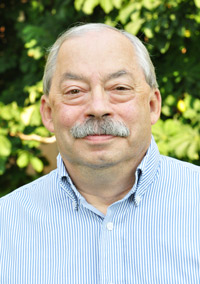
Research Summary
Molecular microbiology and ecology
Research efforts in my laboratory are directed toward the identification and examination of bacterial genes involved in the early periods of legume-microbe symbioses. We specifically are interested in studying Rhizobium and Bradyrhizobium genes that play a prominent role in host/microbe recognition and in the establishment of symbiotic, nitrogen-fixing nodules specific B. japonicum strains. In addition, my laboratory (in collaboration with Dr. Larry Wackett) is using recombinant DNA methodologies to construct novel biodegradation pathways that will allow recombinant bacteria to aerobically degrade recalcitrant, halogenated, environmental pollutants. We also are actively involved in defining bacterial biodegradation pathways for the herbicide atrazine and using isolated proteins and constructed bacteria to bioremediate atrazine-contaminated soils and water.
Publications
- Ishii S, Yan T, Shively DA, Byappanahalli MN, Whitman RL, Sadowsky MJ. 2006. Cladophora (Chlorophyta) spp. harbor human bacterial pathogens in nearshore water of Lake Michigan. Appl Environ Microbiol. 72(7):4545-53.
- Hamilton MJ, Yan T, Sadowsky MJ. 2006. Development of goose- and duck-specific DNA markers to determine sources of Escherichia coli in waterways. Appl Environ Microbiol. 72(6):4012-9.
- Regitano JB, Koskinen WC, Sadowsky MJ. 2006. Influence of soil aging on sorption and bioavailability of simazine. J Agric Food Chem. 54(4):1373-9.
- Ishii S, Ksoll WB, Hicks RE, Sadowsky MJ. 2006. Presence and growth of naturalized Escherichia coli in temperate soils from Lake Superior watersheds.Appl Environ Microbiol. 72(1):612-21.
- Accinelli C, Koskinen WC, Sadowsky MJ. 2006. Influence of Cry1Ac toxin on mineralization and bioavailability of glyphosate in soil. J Agric Food Chem. 54(1):164-9.
- Barriuso E, Koskinen WC, Sadowsky MJ. 2004. Solvent extraction characterization of bioavailability of atrazine residues in soils. J Agric Food Chem. 52(21):6552-6.


Bio
As Associate Dean for the Undergraduate Curriculum in the Office of Undergraduate Education, Leslie Schiff oversees activities of the Campus Curriculum Committee, the Council on Liberal Education, and the Campus Writing Board, and serves as a liaison to collegiate-level curriculum committees. In addition, she is a member of the OUE Executive Committee for Assessment and serves as an advisor on educational policy issues related to the curriculum.Schiff earned her Sc.B in Biology from Brown University in 1979 and her Ph.D. in Immunology from Tufts University in 1986. She joined the faculty at the University of Minnesota in 1990 after a post-doctoral fellowship at Harvard Medical School. A Professor in the Department of Microbiology, Leslie has served for many years as Director of Undergraduate Studies in Microbiology and as faculty liaison for the College of Biological Sciences Writing-Enriched Curriculum. She developed and teaches a two-semester support course for thesis writers in biology, as well as a writing-intensive course on the biology of viruses. Schiff has received University and national awards for her teaching, including the Carski Award from the American Society for Microbiology, and the Morse-Alumni Distinguished Teaching Award. Her disciplinary research focuses on the cell entry of mammalian reoviruses, which are being developed as therapeutic agents to treat human cancers.
Research Summary
Virus-host interactions, viral entry, translational control in virus-infected cells, viral immune avoidance mechanisms
Contact
Address
220D Morrill Hall100 Church St SE
Minneapolis, MN 55455


Research Summary
Understanding the dynamics of how growth-promoting mutations arise and accumulate in a population of cells is a fundamental problem underlying our understanding of drug resistance, tumorigenesis, and the treatment of cancer. We use experimental evolution, mathematical modeling, and comparative genomics to understand the impact of mutations on the adaptation of a cell and its surrounding population.We employ diverse yeast model systems (Saccharomyces cerevisiae, Candida albicans, Candida auris, etc.) to understand how genome instability contributes to adaptation (eg. antifungal drug resistance) and determine the underlying mechanisms that promote genome instability. In the human fungal pathogen Candida albicans, genome rearrangements resulting in copy number variation (CNV) and loss of heterozygosity (LOH) confer increased virulence and antifungal drug resistance, yet the mechanisms driving these rearrangements are not completely understood. We recently identified an extensive array of long repeat sequences (65–6499 bp) that are associated with CNV, LOH, and chromosomal inversions and are a significant source of genome plasticity across diverse strain backgrounds - including clinical, environmental, and experimentally evolved C. albicans isolates. Many of these long repeat sequences were uncharacterized and encompass one or more coding sequences that are actively transcribed. Further, the repeats associated with genome rearrangements were predominantly inverted and separated by up to ~1.6 Mb, an extraordinary distance for homology-based DNA repair/recombination in yeast!We also utilize flow cytometry-based systems that enable us to detect the acquisition and spread of beneficial mutations within populations. We found that polyploid S. cerevisiae adapted more rapidly than isogenic haploid or diploid cells in poor carbon medium, and that polyploid cells acquired more mutations, including point mutations, large segmental aneuploidies, and whole chromosome aneuploidies (Selmecki et al., Nature 2015). Additionally, polyploid cells acquired a broader spectrum of beneficial mutations than lower ploidy cells (Scott et al., MBE 2017). We continue to use these ploidy lineages to study how changes in chromosome number (ploidy and aneuploidy), cell size, and environment affect genome stability and evolvability. Our previous research identified chromosome aneuploidy as a driver for the acquisition of antifungal drug resistance in the pathogenic yeast C. albicans (Selmecki et al., Science 2006). We found that aneuploid cells arose within a population very rapidly in the presence of antifungal drug (Selmecki et al., PLoS Genetics 2009), and that increased copy number of two specific genes found on the most common aneuploid chromosome provided the drug resistance phenotype (Selmecki et al., Molecular Microbiology 2008).
Contact
Address
3-105 Microbiology Research Facility689 SE 23rd Ave
Minneapolis, MN 55455


Research Summary
Human Retrovirus Transmission and Pathogenesis I am interested in the cellular and molecular mechanisms underlying virus transmission and the initiation of virus-induced diseases. After working for many years with experimental infections of mice with an RNA virus, lymphocytic choriomeningitis virus (LCMV), my research focus has shifted recently to the study of infections with the human retroviruses, human immunodeficiency virus type 1 (HIV-1) and human T-cell leukemia virus types I and II (HTLV-I and HTLV-II). These retroviruses can be transmitted either vertically or horizontally in human populations and we are beginning to define essential parameters, in both the donor and recipient of infectivity, that impact on the overall probability of transmission. Our experiments are based on primary human cell populations, human organ cultures, and body fluids from seropositive patients. Our goal is to develop manipulable experimental systems that duplicate the natural routes for virus transmission. More specifically, we are investigating the nature of HIV-1 infections in male reproductive tissue to understand variability in the shedding of HIV-1 infectivity in seminal fluid. In recipients, we are interested in defining the mechanisms whereby HIV-1 infectivity can breach epithelial barriers at mucosal surfaces and gain access to intraepithelial leukocytes for the initiation and expansion of primary infections. New insight into HIV transmission, with both cell-free and cell-associated HIV infectivity, will be invaluable in refining vaccine studies and may contribute significantly to the design of novel therapeutic agents to reduce the probability of HIV transmission.
Contact
Address
2-149 MRF689 23rd Ave SE
Minneapolis, MN 55455


Research Summary
Cancer immunology and immunothereapy; T cell engineering The Stromnes laboratory is focused on advancing the understanding of cancer immunology and immunotherapy, with a particular emphasis on properties of the tumor and the tumor microenvironment that influence antigen-specific T lymphocyte migration and function. The laboratory aims to uncover how tumors and their mutations coordinate a suppressive microenvironment and elicit a program of T cell dysfunction. The lab is also focused on understanding the cellular and acellular components of tumor microenvironment that influence immunotherapy response. The laboratory combines studies of human tumors, genetically engineered mouse models that faithfully recapitulate human cancer, and novel cell engineering approaches evaluated in both mouse and human T cells to develop next generation cellular therapies for intractable malignancies, with a major focus on carcinomas including pancreatic cancer. Preclinical studies performed by Dr. Stromnes and colleagues have led to a novel engineered T cell therapy for pancreatic and ovarian cancer patient treatment.
Contact
Address
Dept of Microbiology and Immunology / Center for Immunology2-186 Wallin Medical Biosciences Building, 2101 6th St SE
Minneapolis, MN 55455


Research Summary
Mycobacterium tuberculosis Counter-immune MechanismsThe bacterial pathogen Mycobacterium tuberculosis (Mtb) is unusual in its ability to persist in the lungs of infected humans for many years, despite triggering a robust immune response. My laboratory seeks to identify and characterize factors that Mtb requires for evasion of host adaptive immunity and persistence. We use a combination of bacterial genetics and the mouse infection model to identify these "counter-immune" factors.The laboratory is currently focused on characterization of an Mtb signal transduction system, Pst/SenX3-RegX3, which regulates gene expression in response to phosphate availability. Mtb mutants that lack components of this system are specifically sensitive to host adaptive immunity and fail to persist in the lungs of mice. We aim to identify the genes controlled by this system that directly contribute to avoidance of host immune responses. Knowledge of these interactions between host and pathogen may contribute to vaccine design, as well as provide novel targets for therapeutic intervention.
Education
Contact
Address
4-113 MRF, DEL CODE 2821A689 23rd Ave SE
Minneapolis, MN 55455


Research Summary
T cell responses in autoimmunity and chronic infections My laboratory studies CD8 and CD4 T cell responses to proteins, which are persistently present in an organism to elucidate how chronic interaction with cognate antigen impacts T cell selection, differentiation and survival. We observe and manipulate chronic pathogen or self-specific T cell responses over time by using MHC tetramers, adoptive transfer of transgenic T cells and fluorescence flow cytometry. We are currently interested in understanding what maintains the population of memory T cells specific for persistent pathogens, such as polyoma virus. In addition, we are interested in elucidating how tolerance is induced and maintained to intestinal protein, as breakdown of this can lead to diseases such as ulcerative colitis and Crohn's disease. By understanding these processes, we can learn how to manipulate the immune system for eradication of persistent infections, as well as interfering with the development and progression of autoimmunity.
Contact
Address
2-180 MBB2101 6th Street SE
Minneapolis, MN 55414
Research Summary
Bacteria are ubiquitous in nature and contribute to human health and disease, but antibiotic-resistant pathogens pose a significant public health threat. Despite decades of research, 25-50% of bacterial genes (even in the best studied model organisms) remain uncharacterized. However, these genes (the “dark matter” of bacterial genomes) are often differentially expressed or important for fitness in biofilms and infections. The overarching goals of our research are to discover functions for poorly characterized bacterial genes and to understand how bacteria interact with their environment. We use genetic, biochemical, and computational tools to understand the underpinnings of bacterial biofilm formation, polymicrobial interactions and competition, and uncharacterized gene function. Our work primarily focuses on the Gram-positive commensal and pathogen Enterococcus faecalis. We are also interested in the development and distribution of biological tools such as arrayed transposon libraries. Our work has important implications for fundamental bacteriology, the ecology of commensal microbiomes, treatment of biofilm-associated and polymicrobial infections, and biofilm-associated antibiotic resistance.